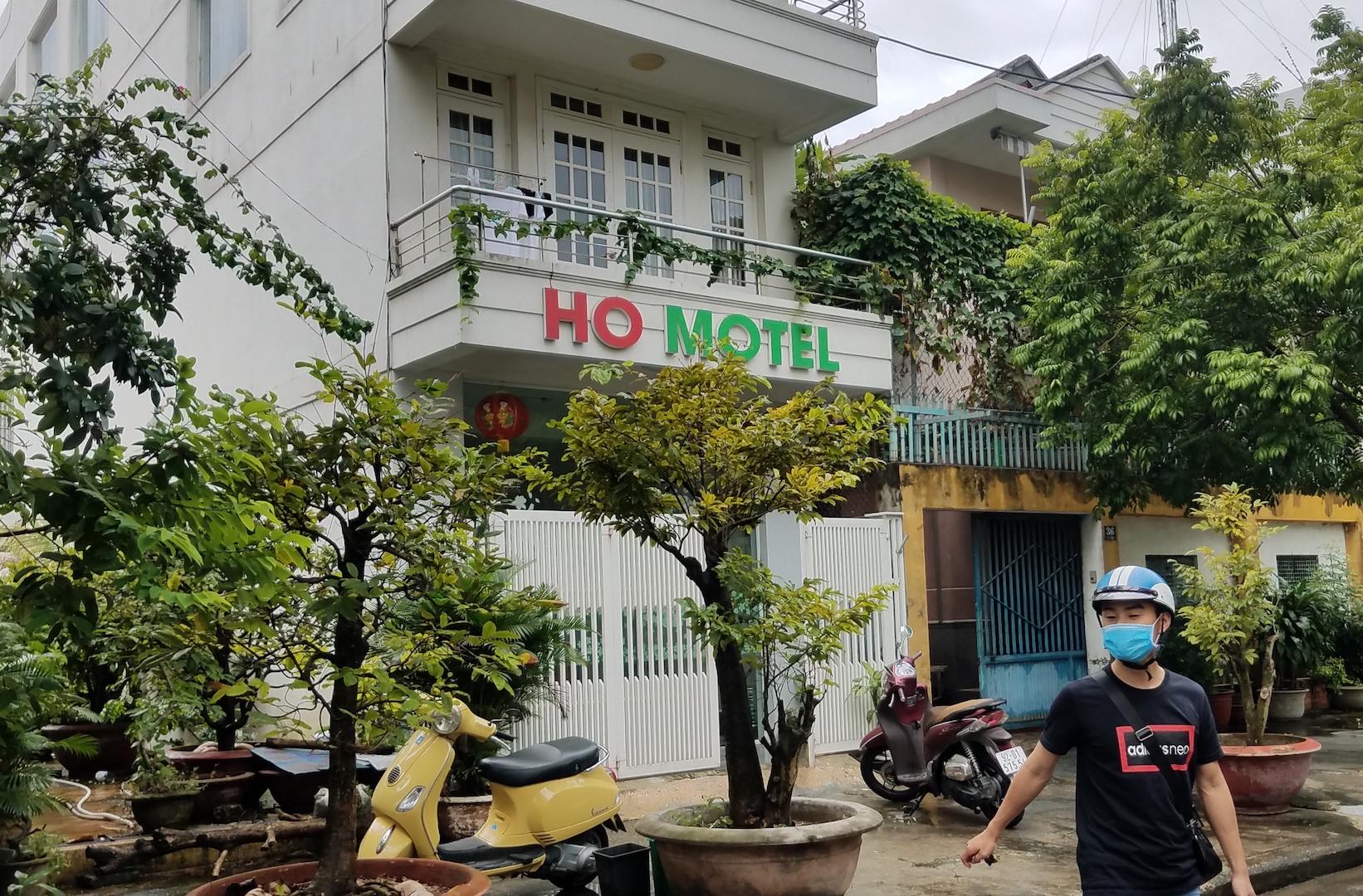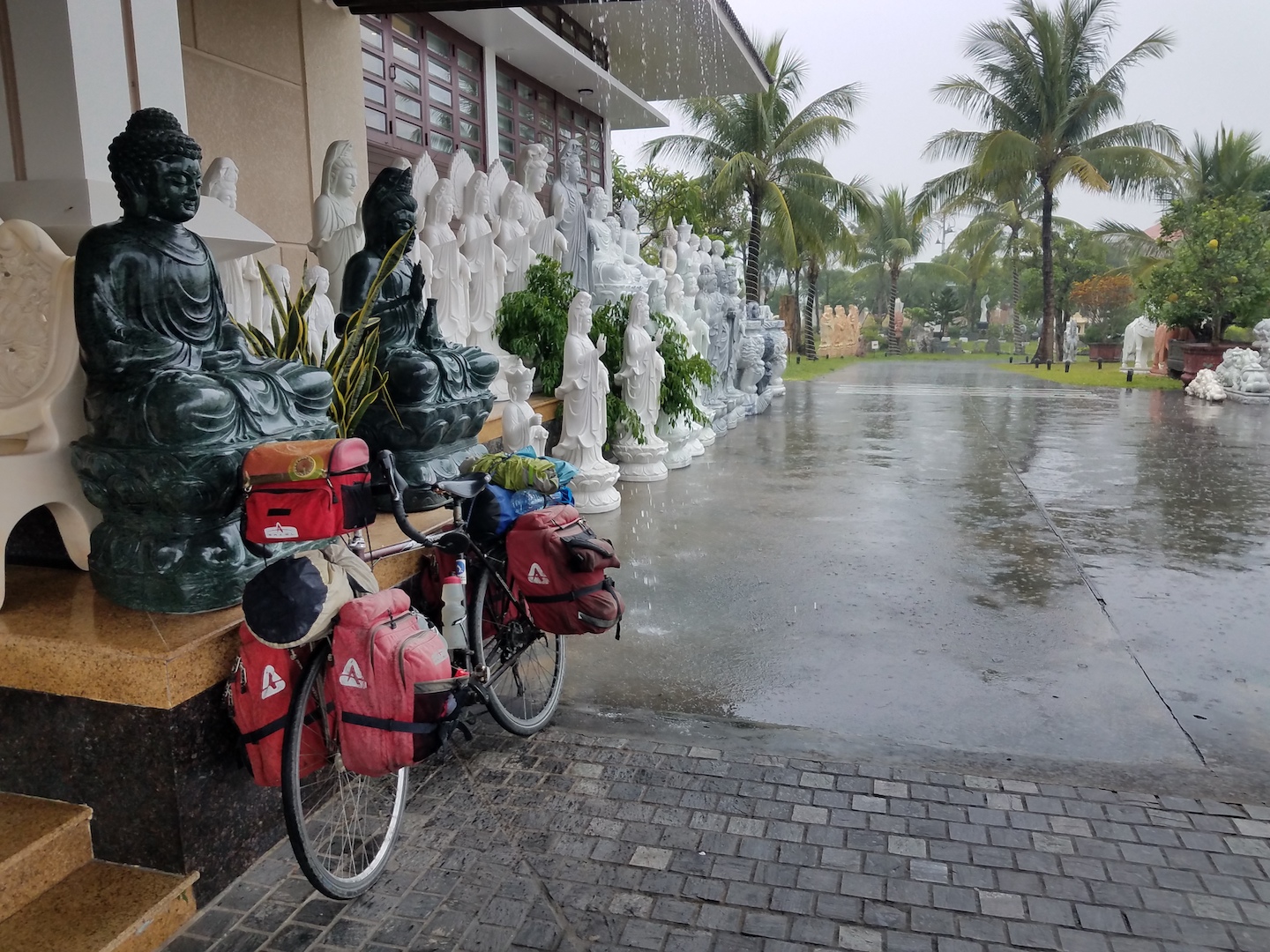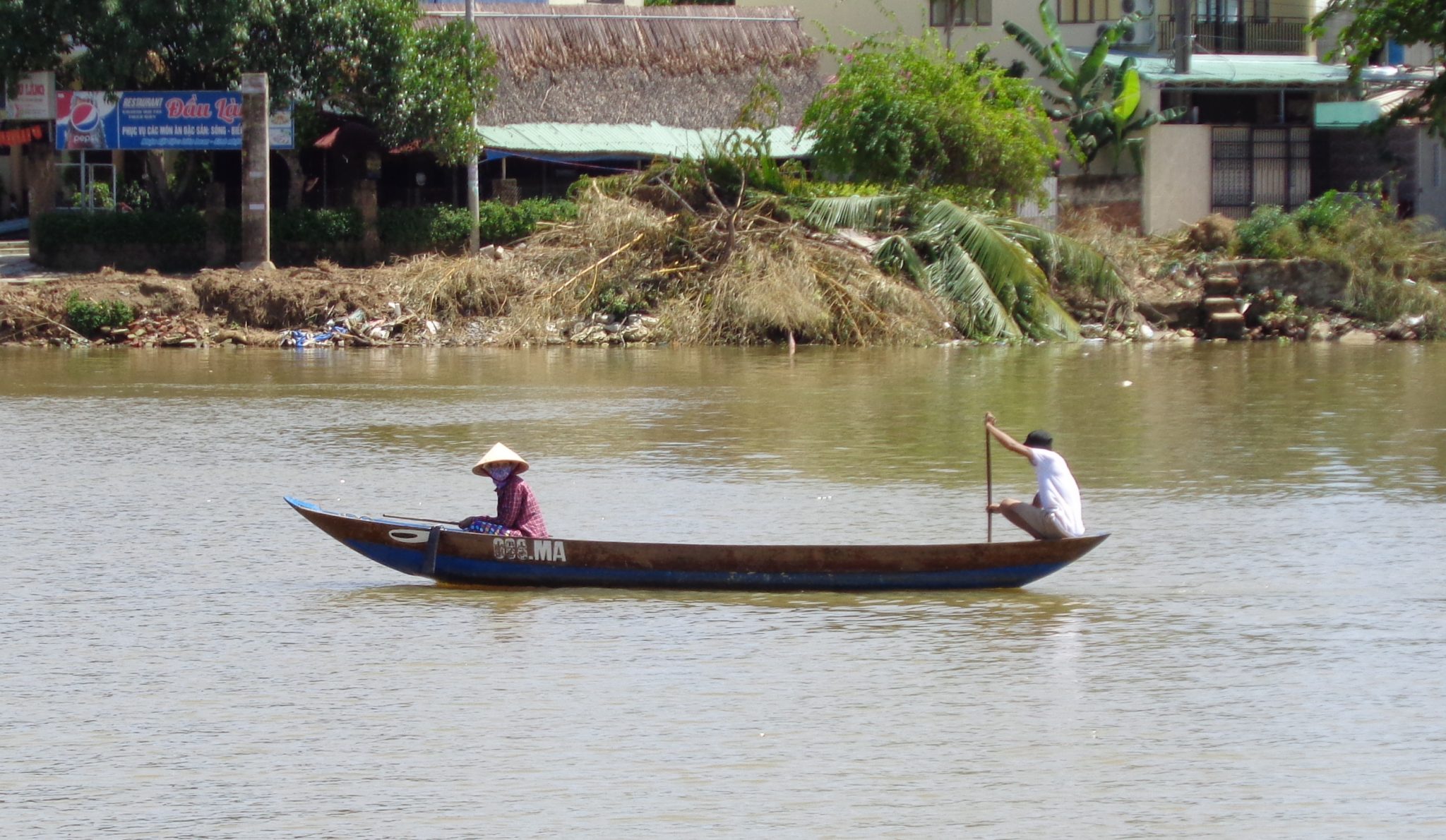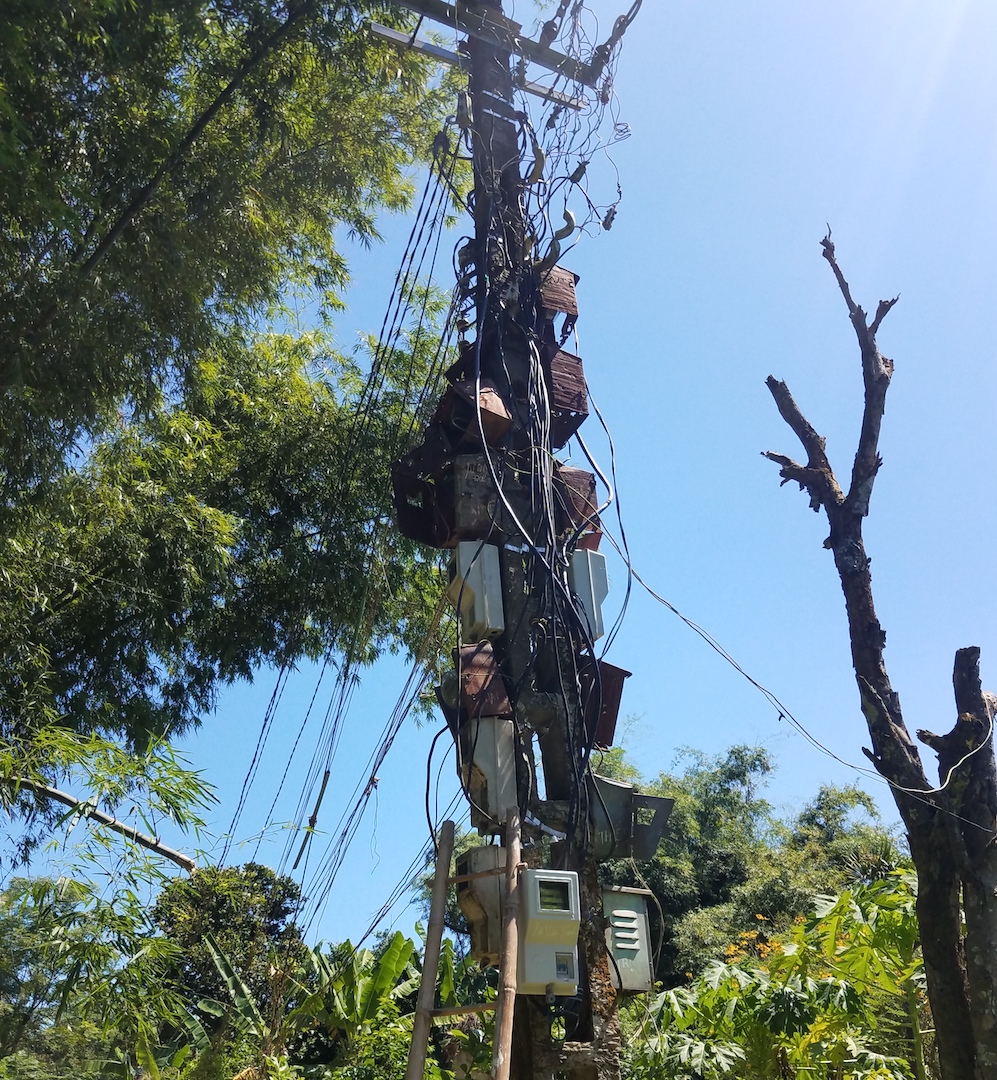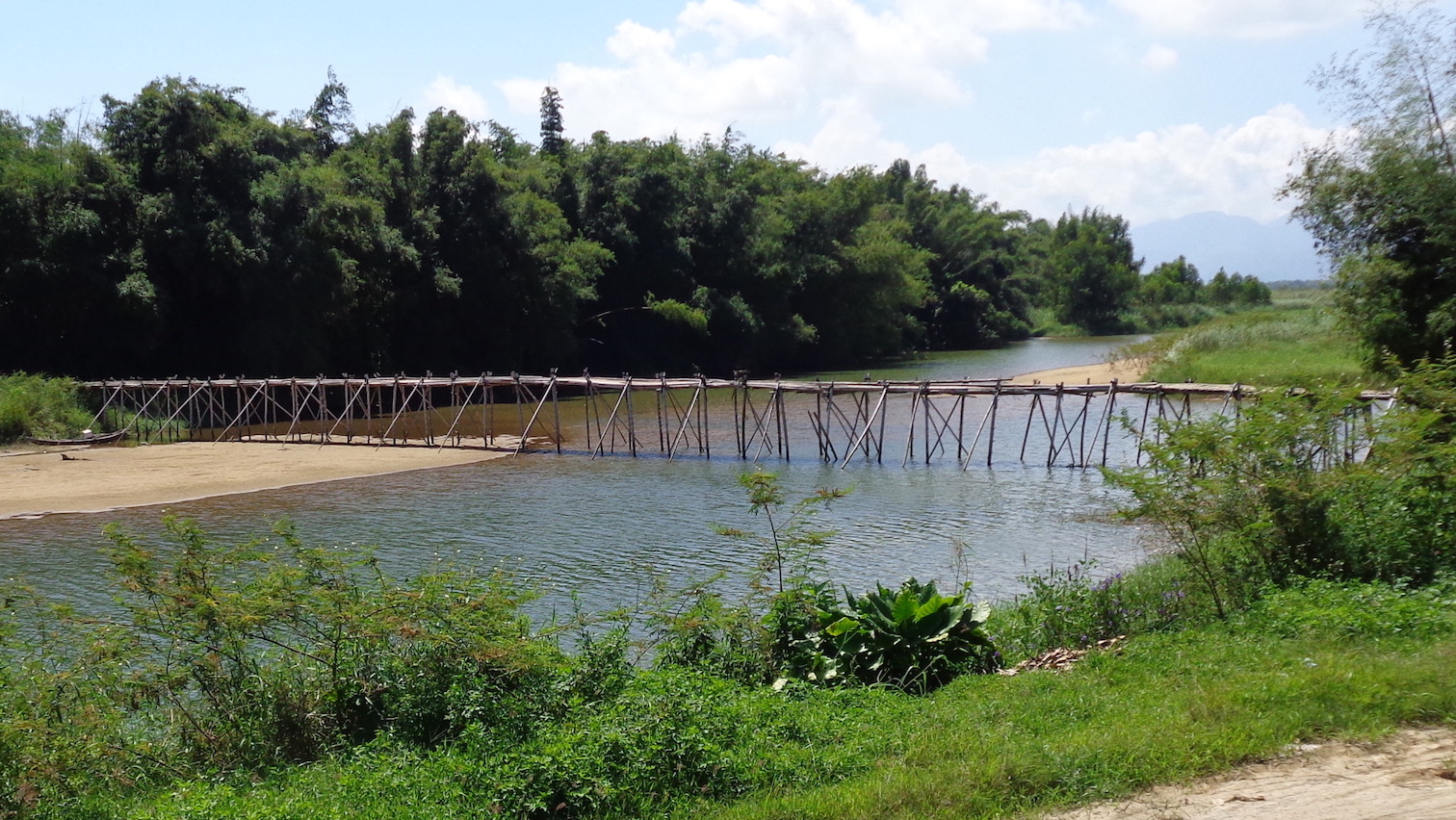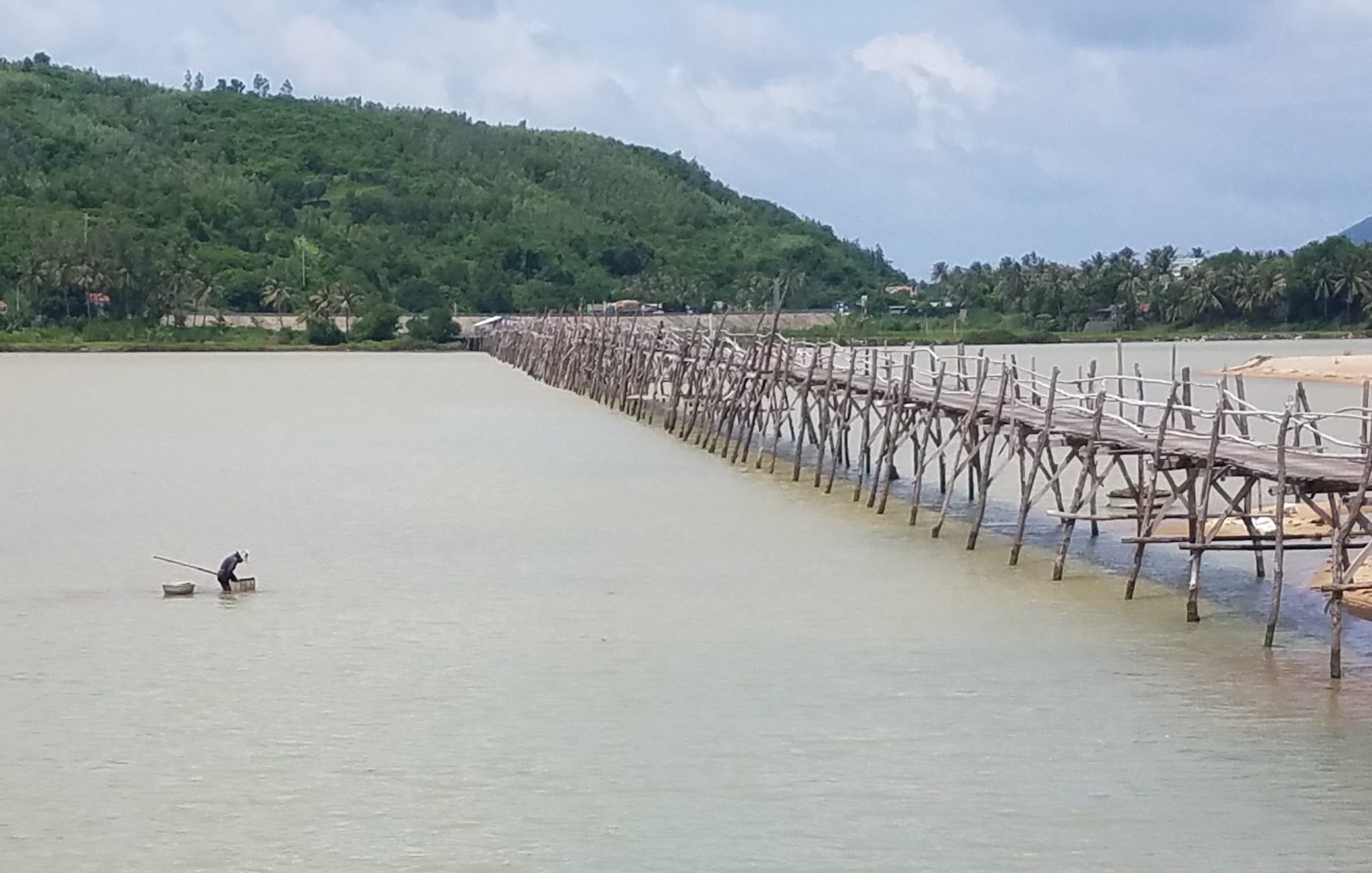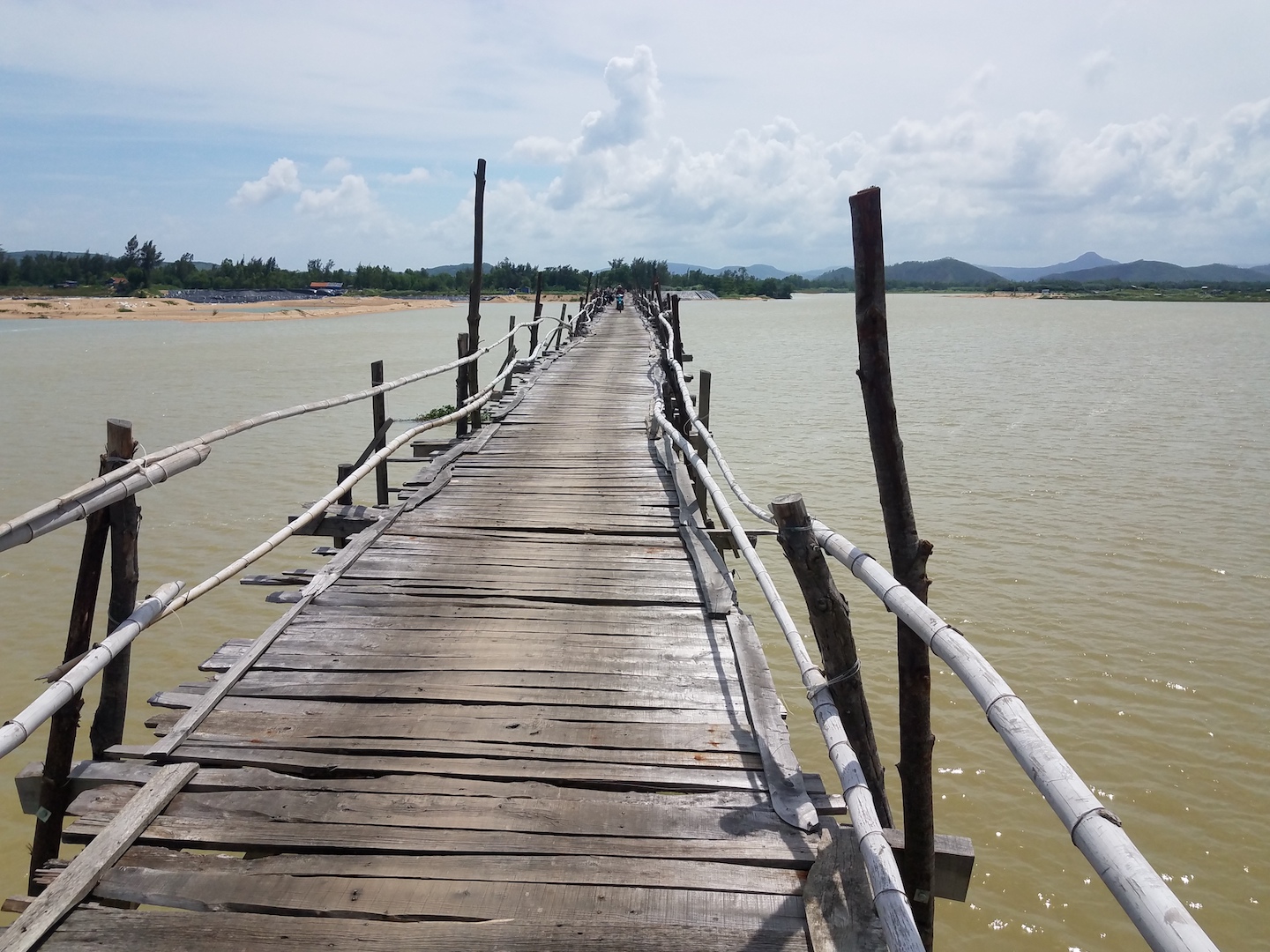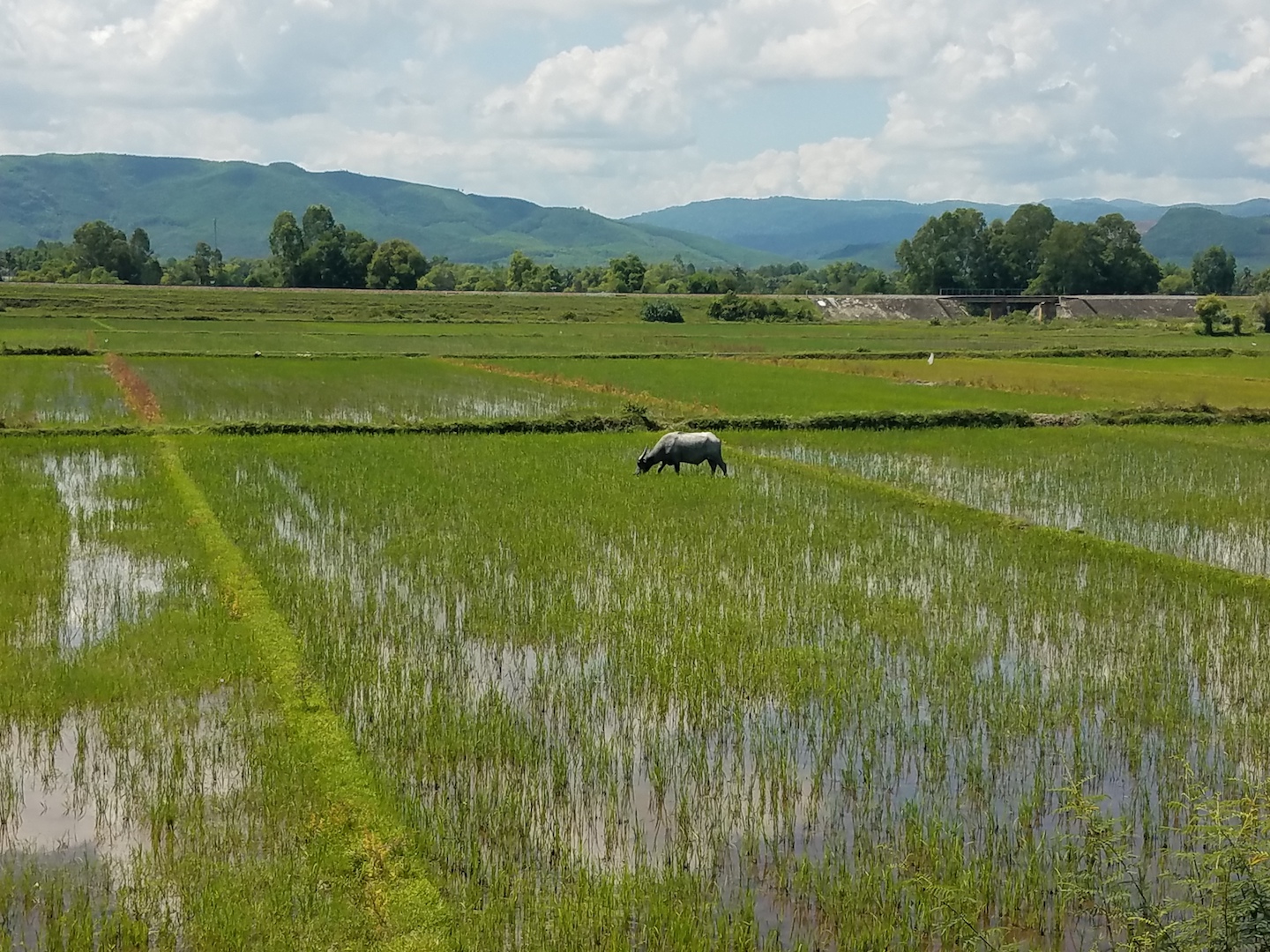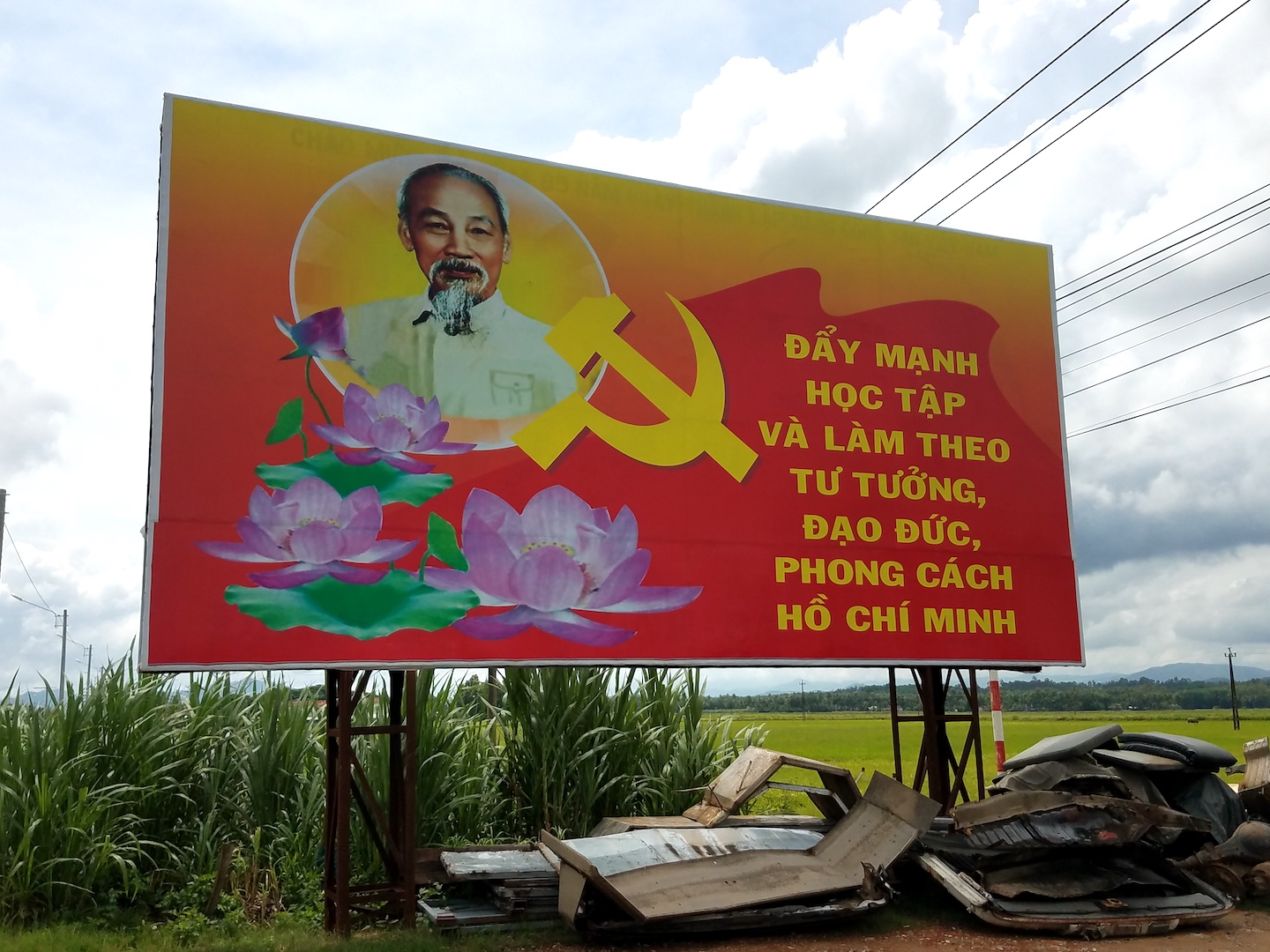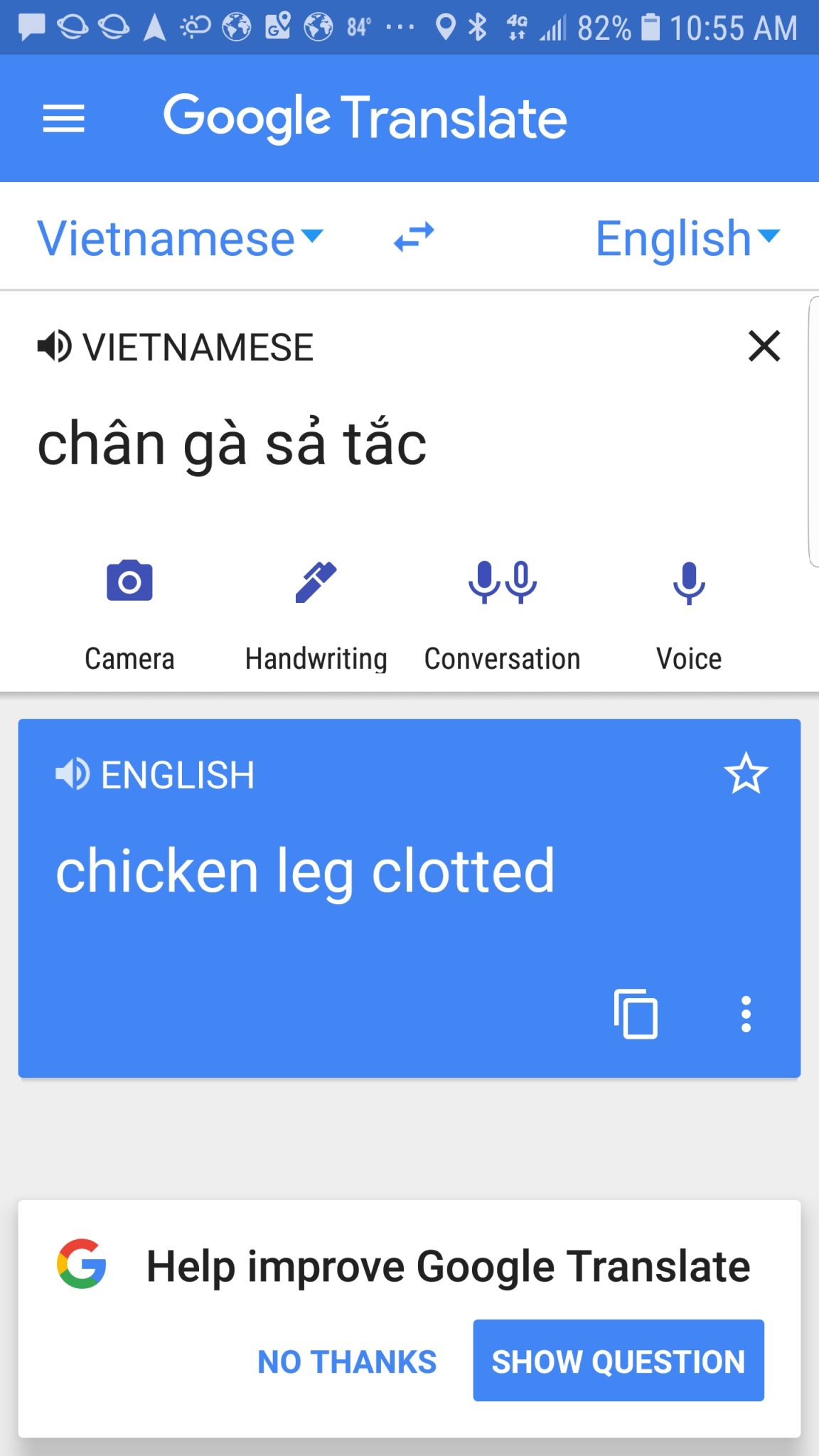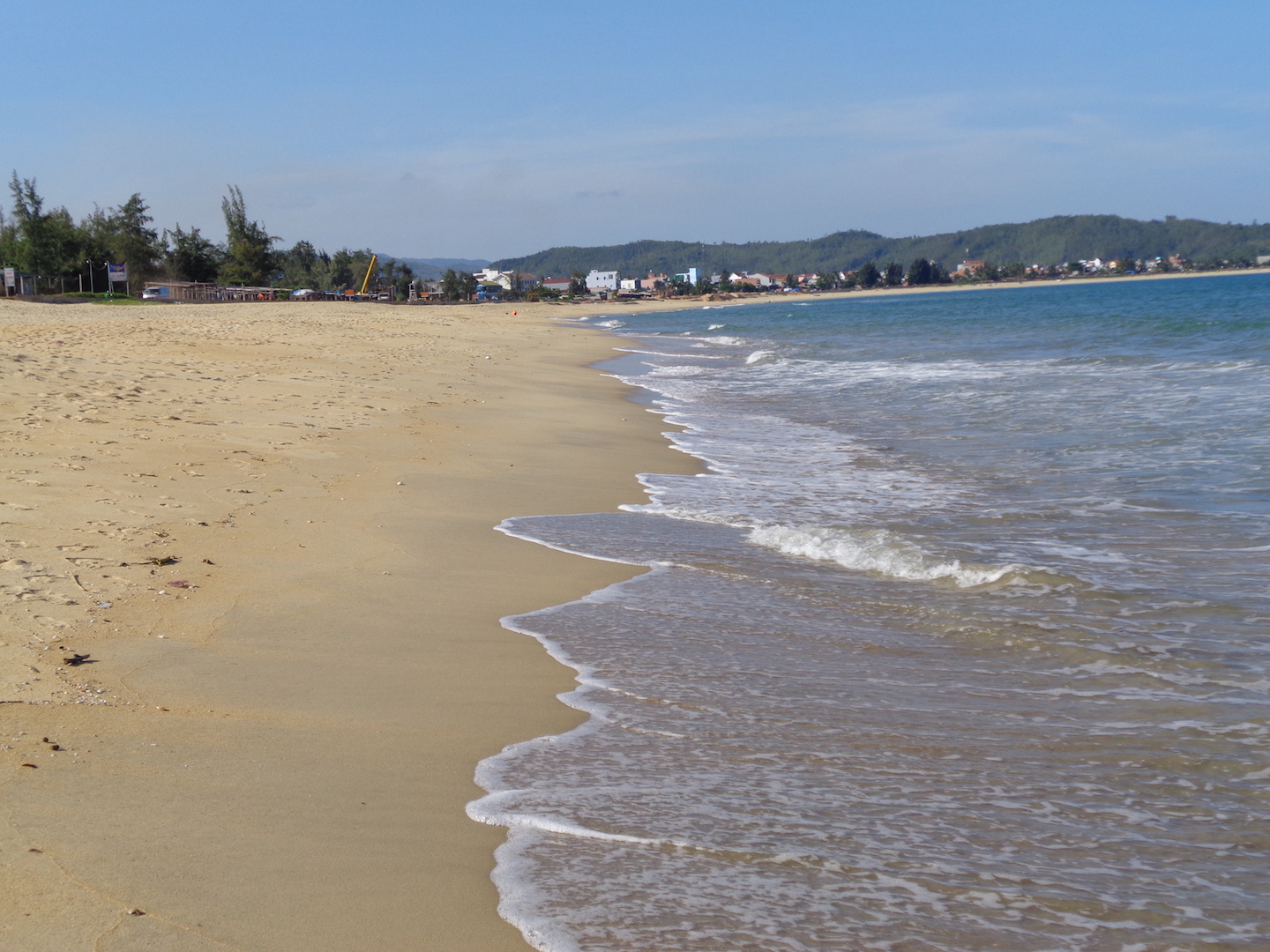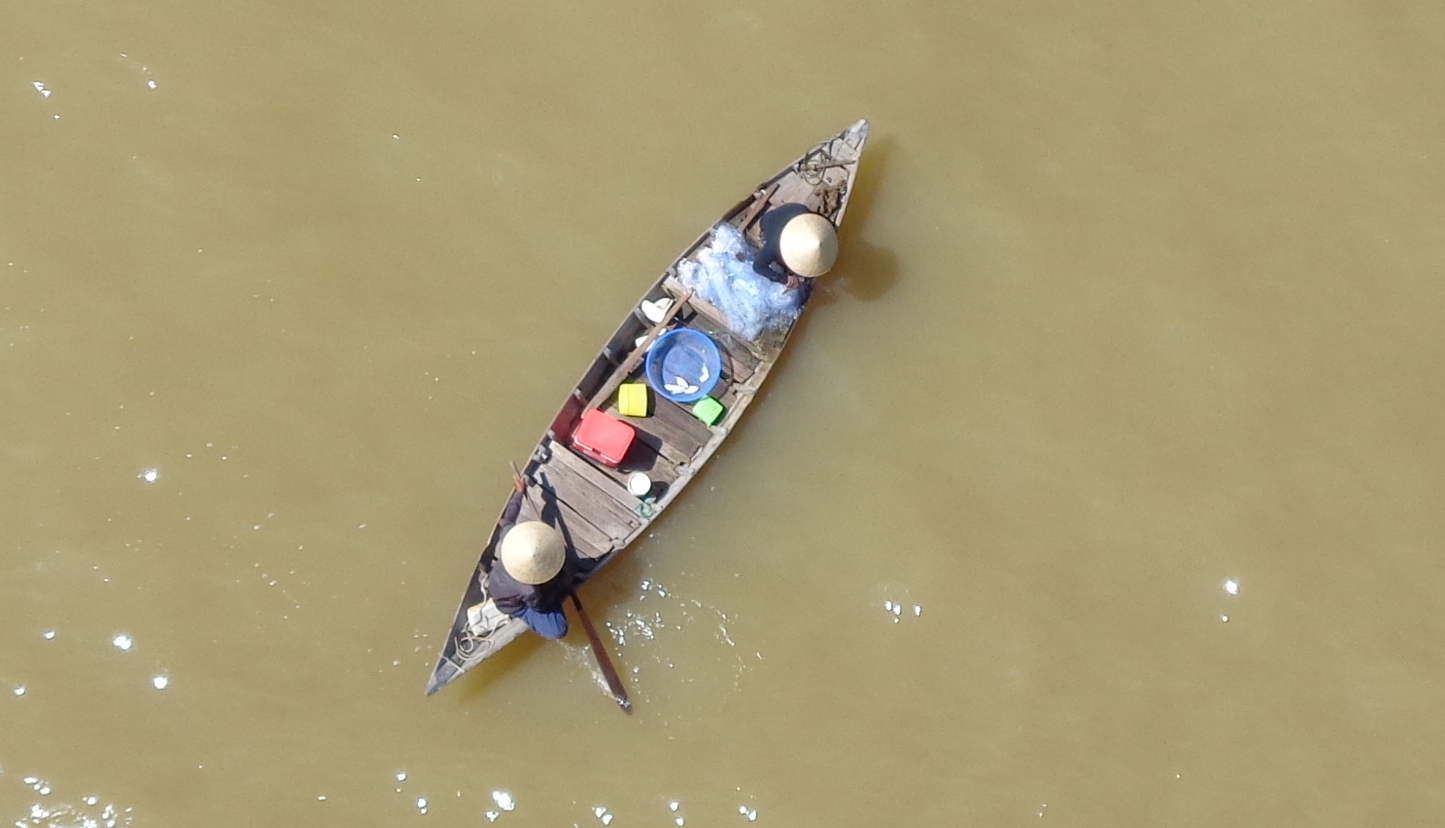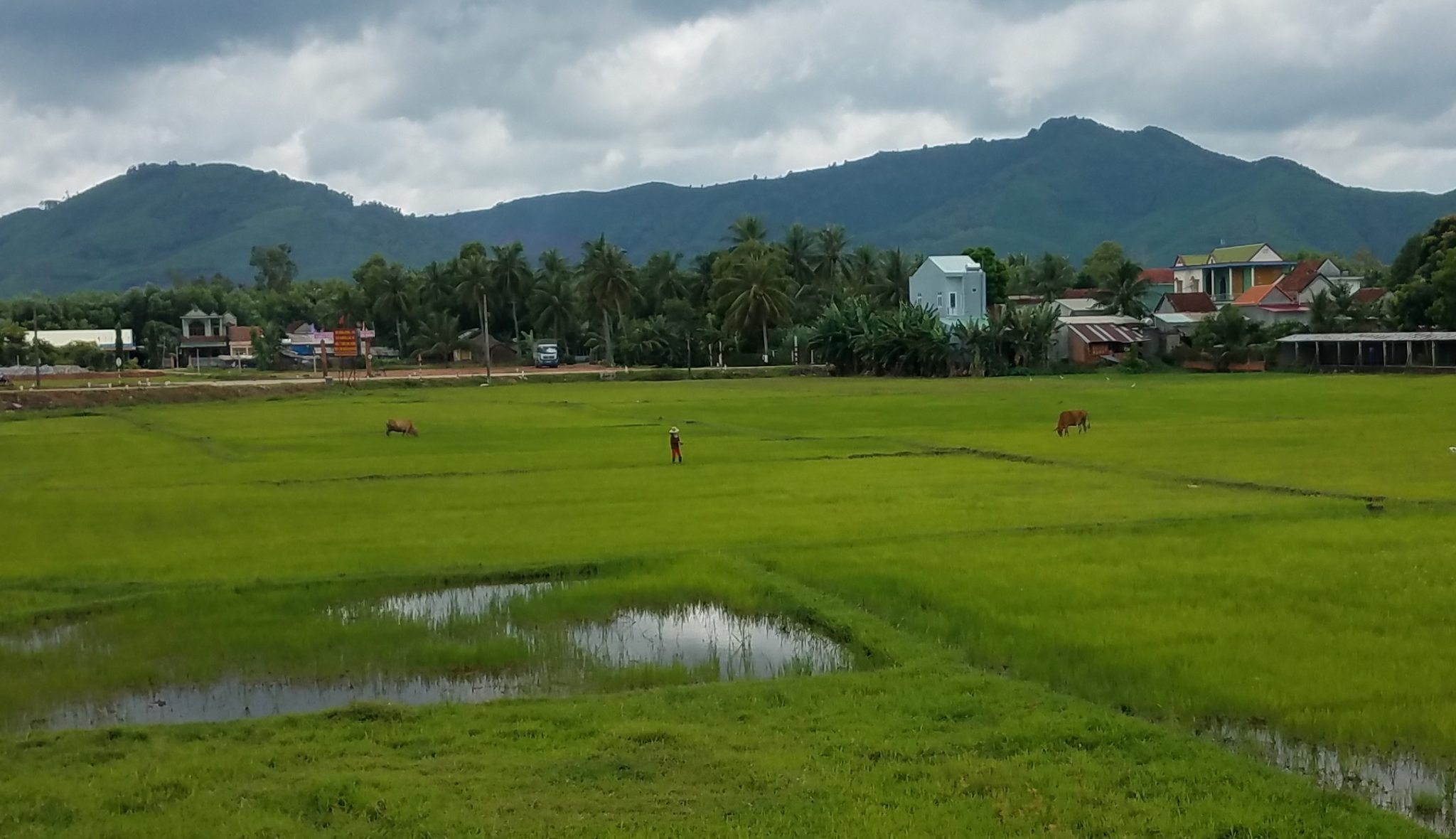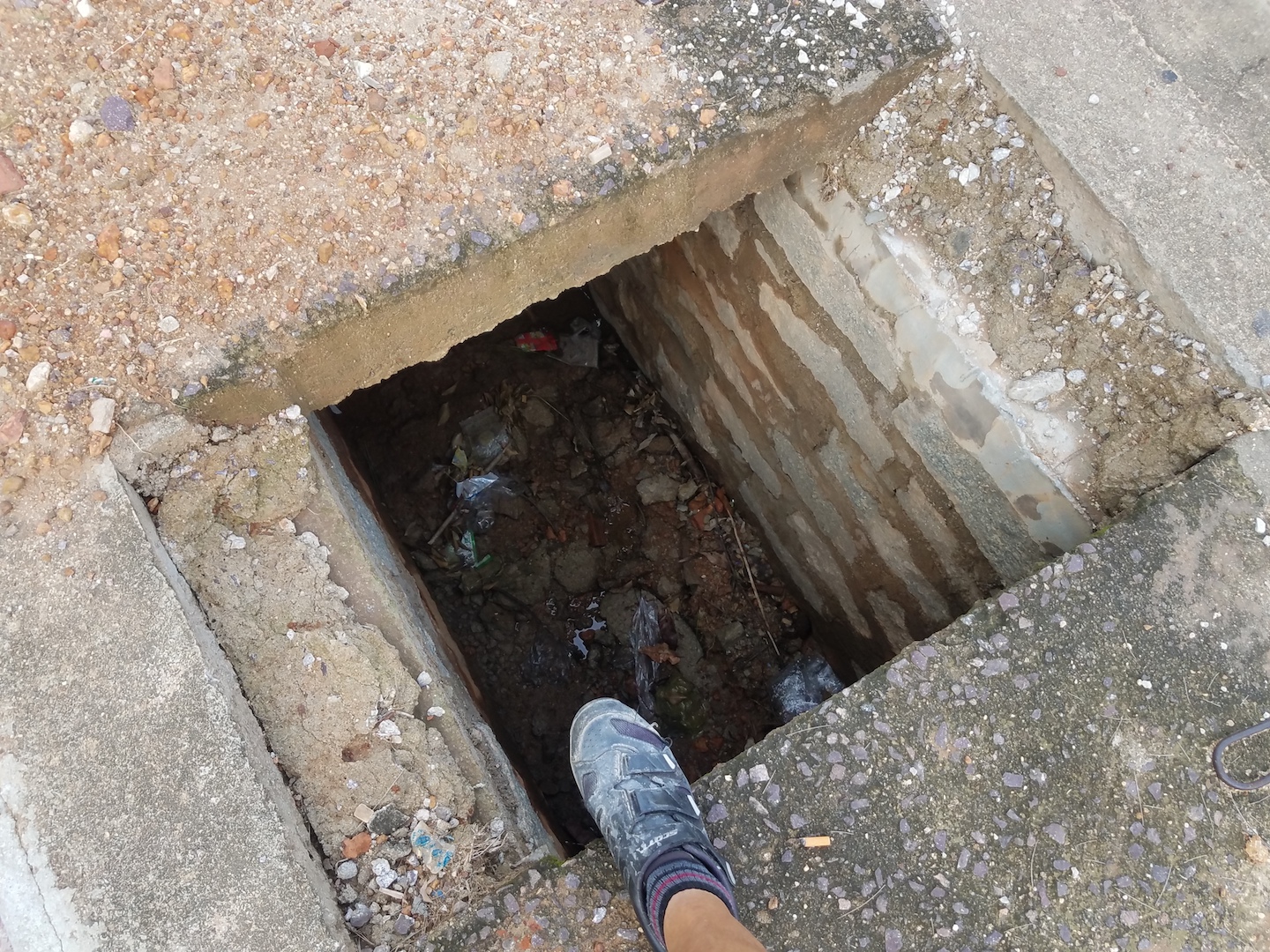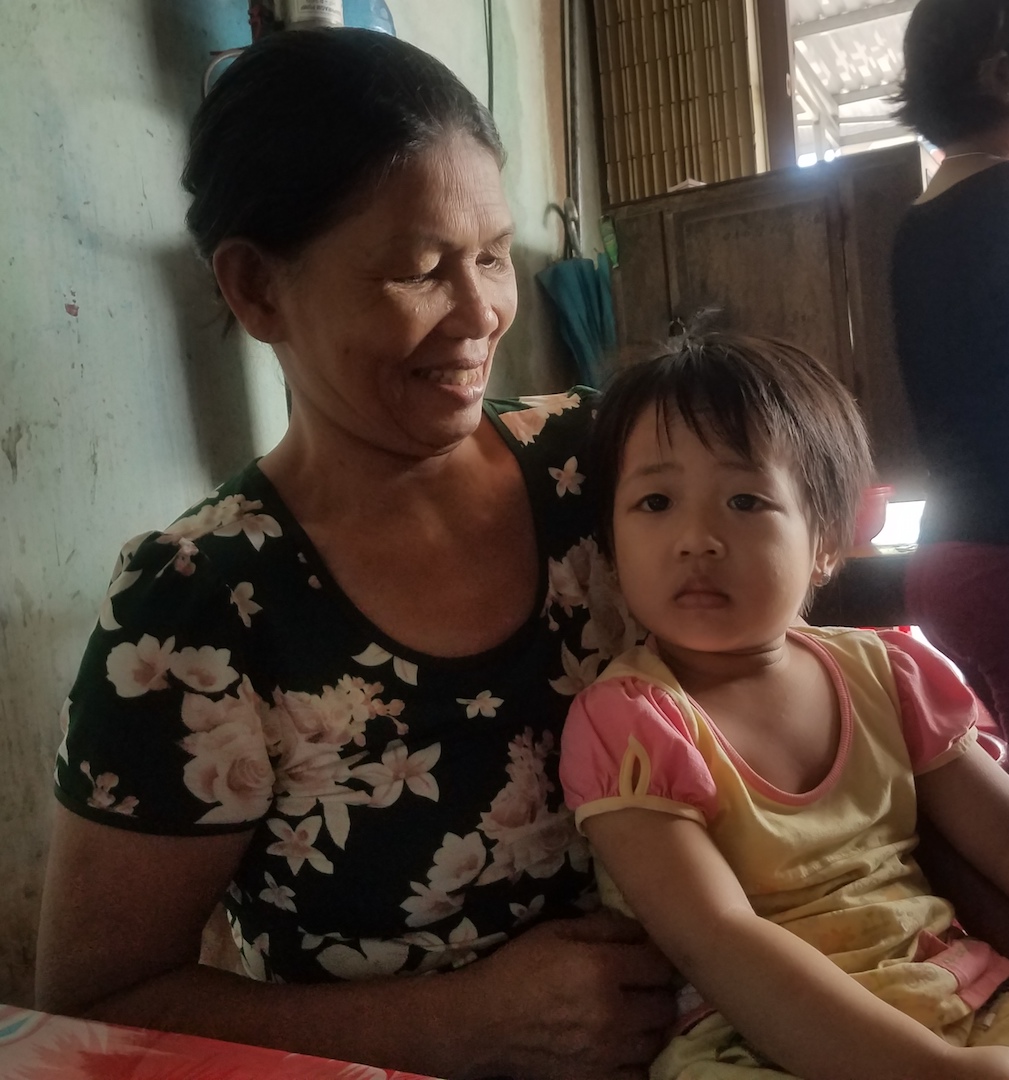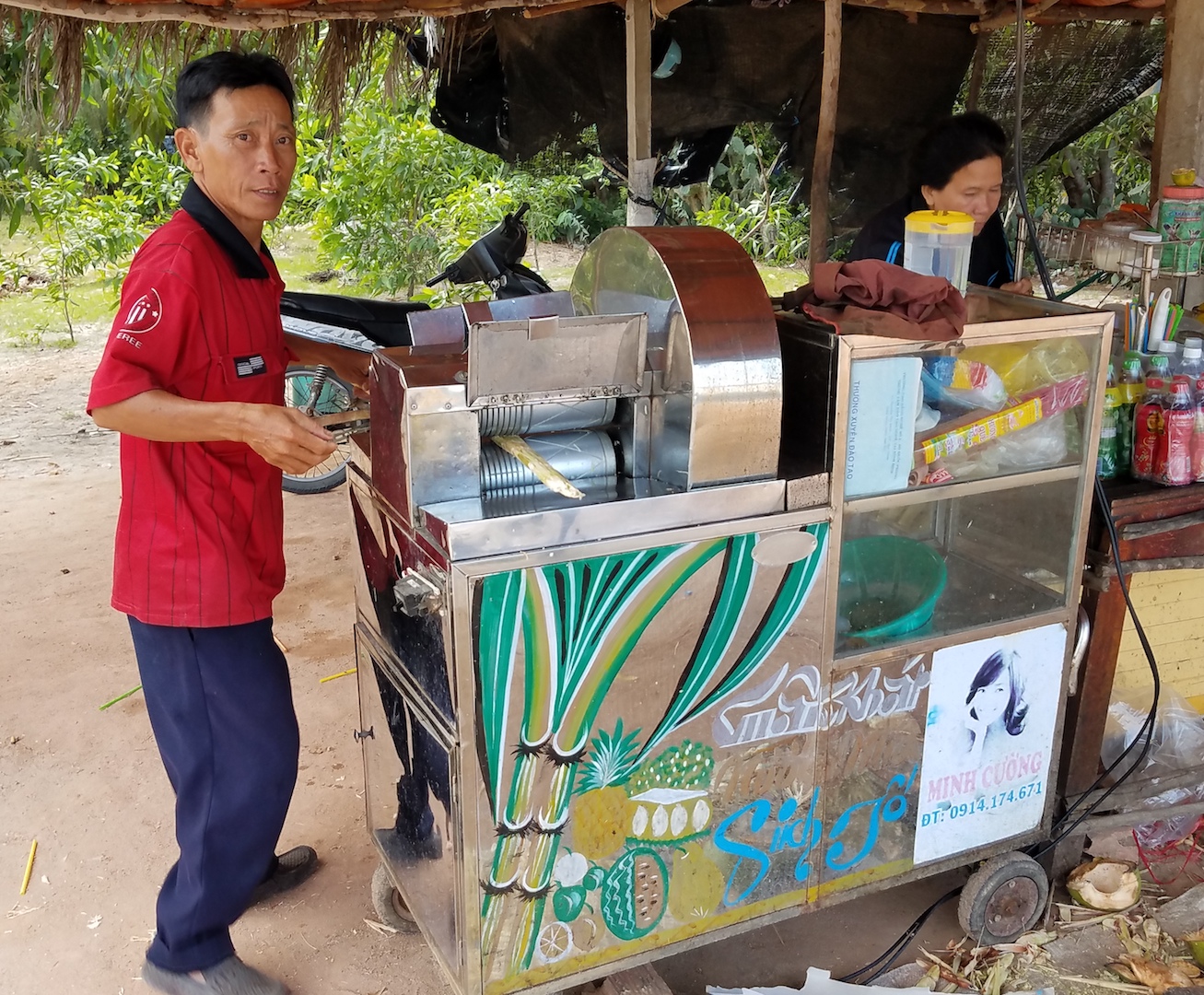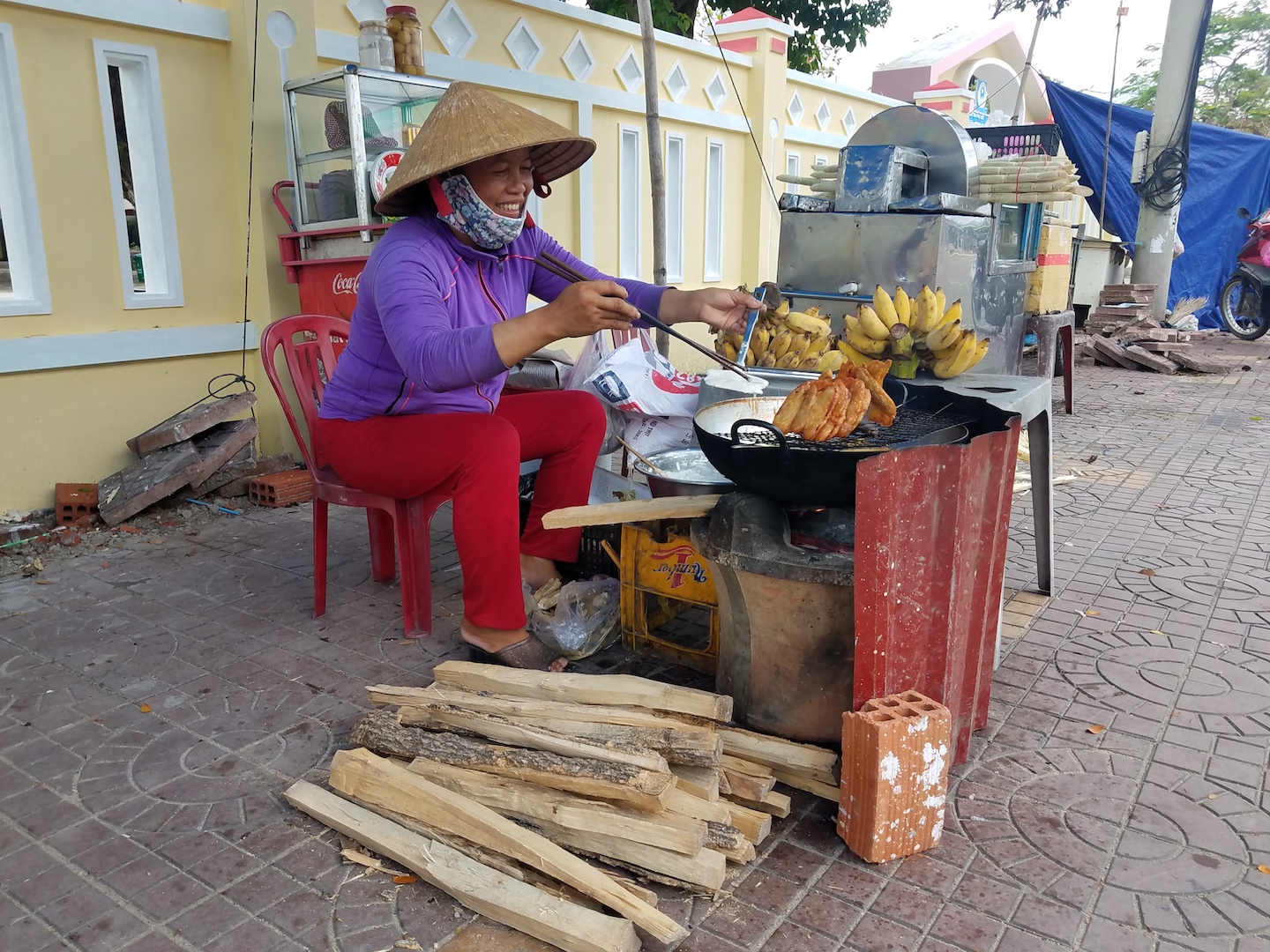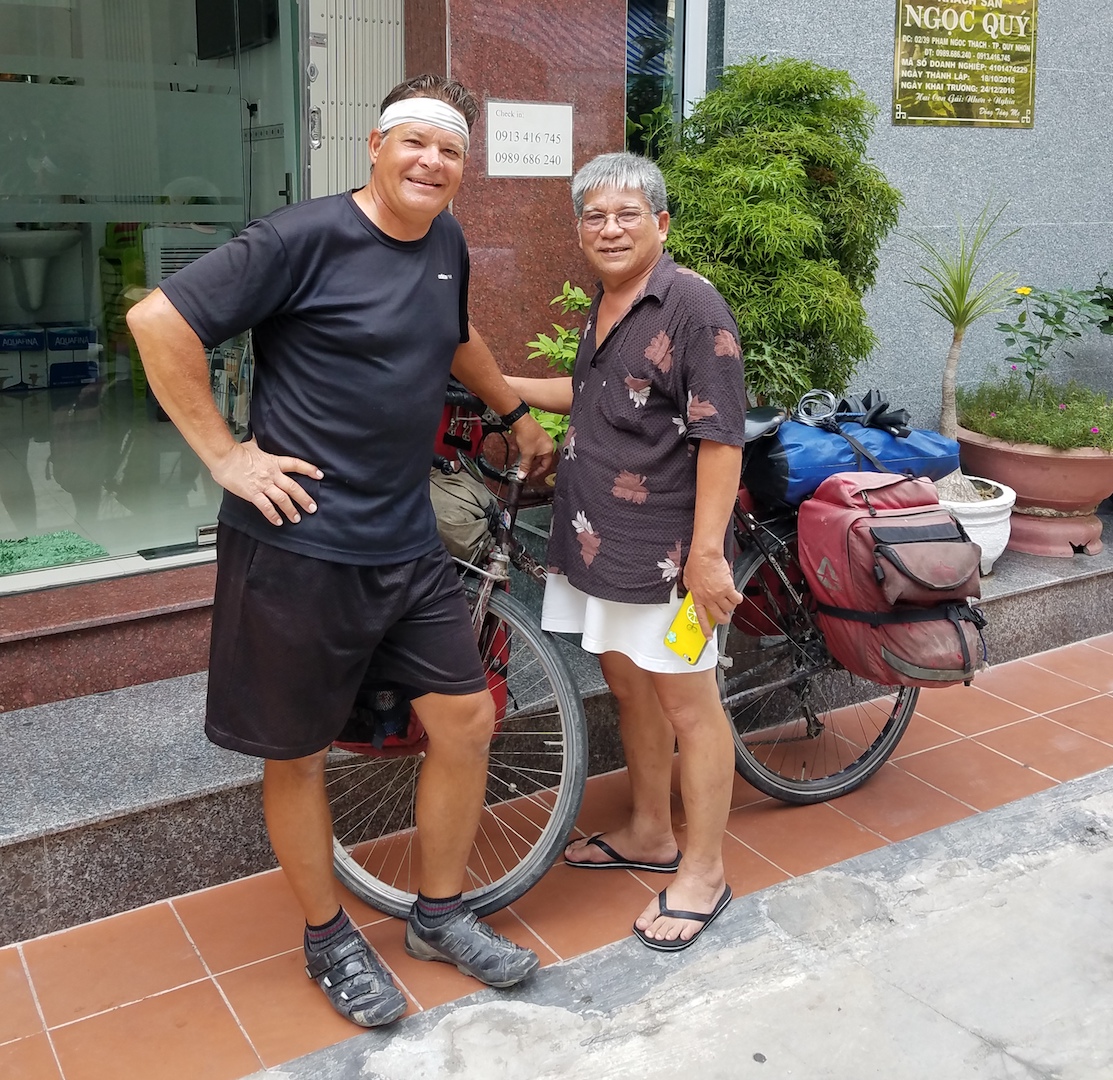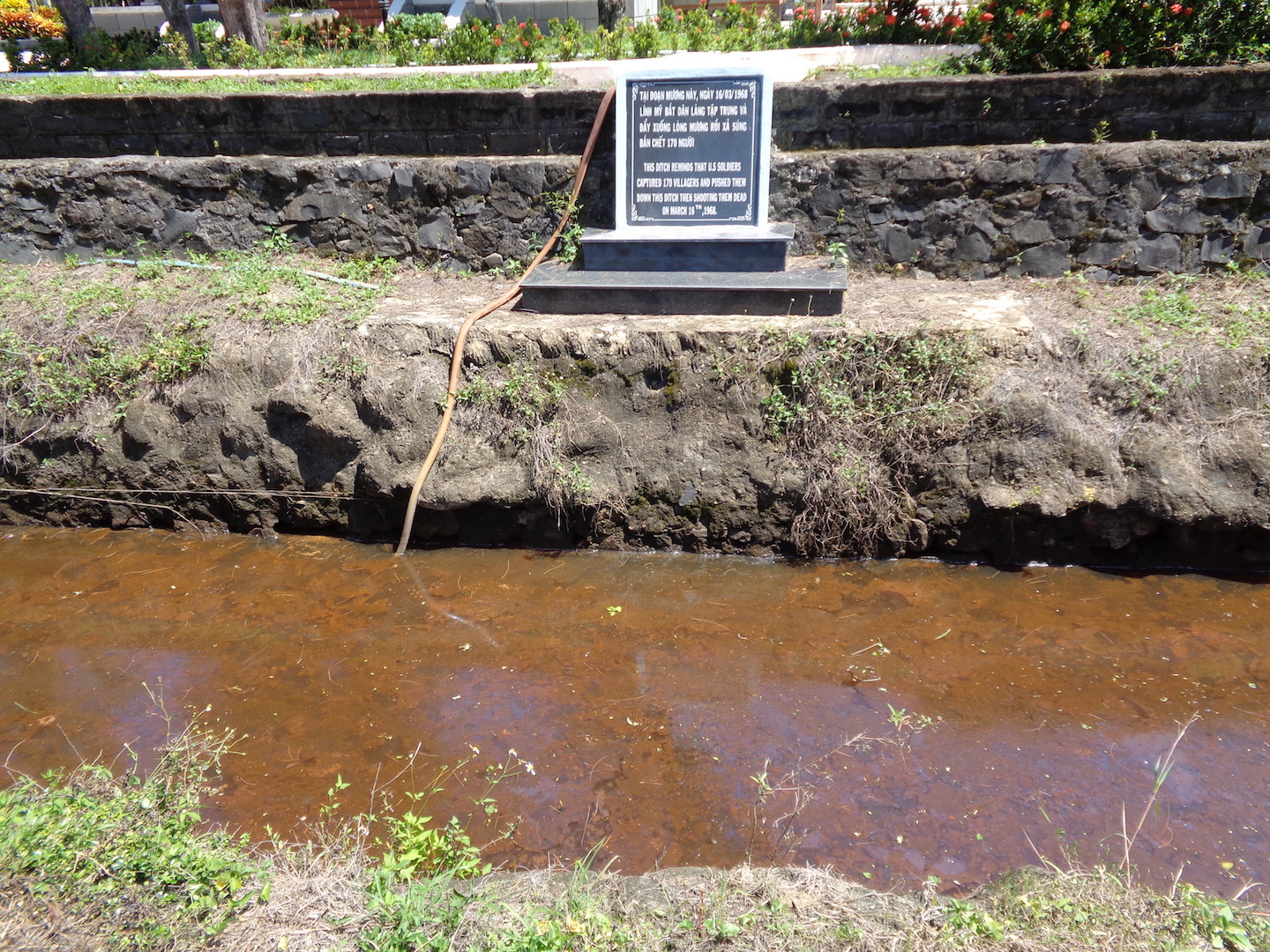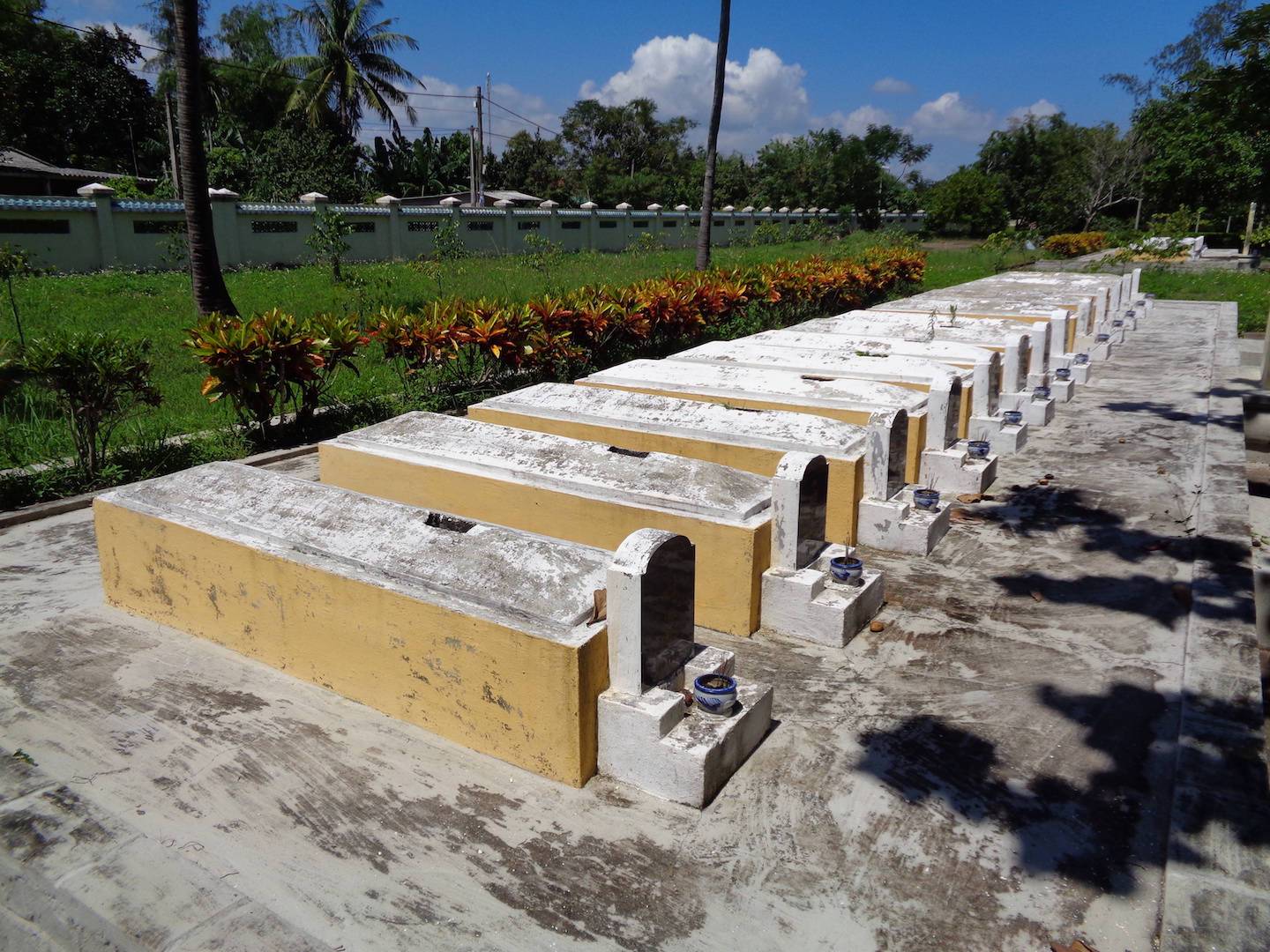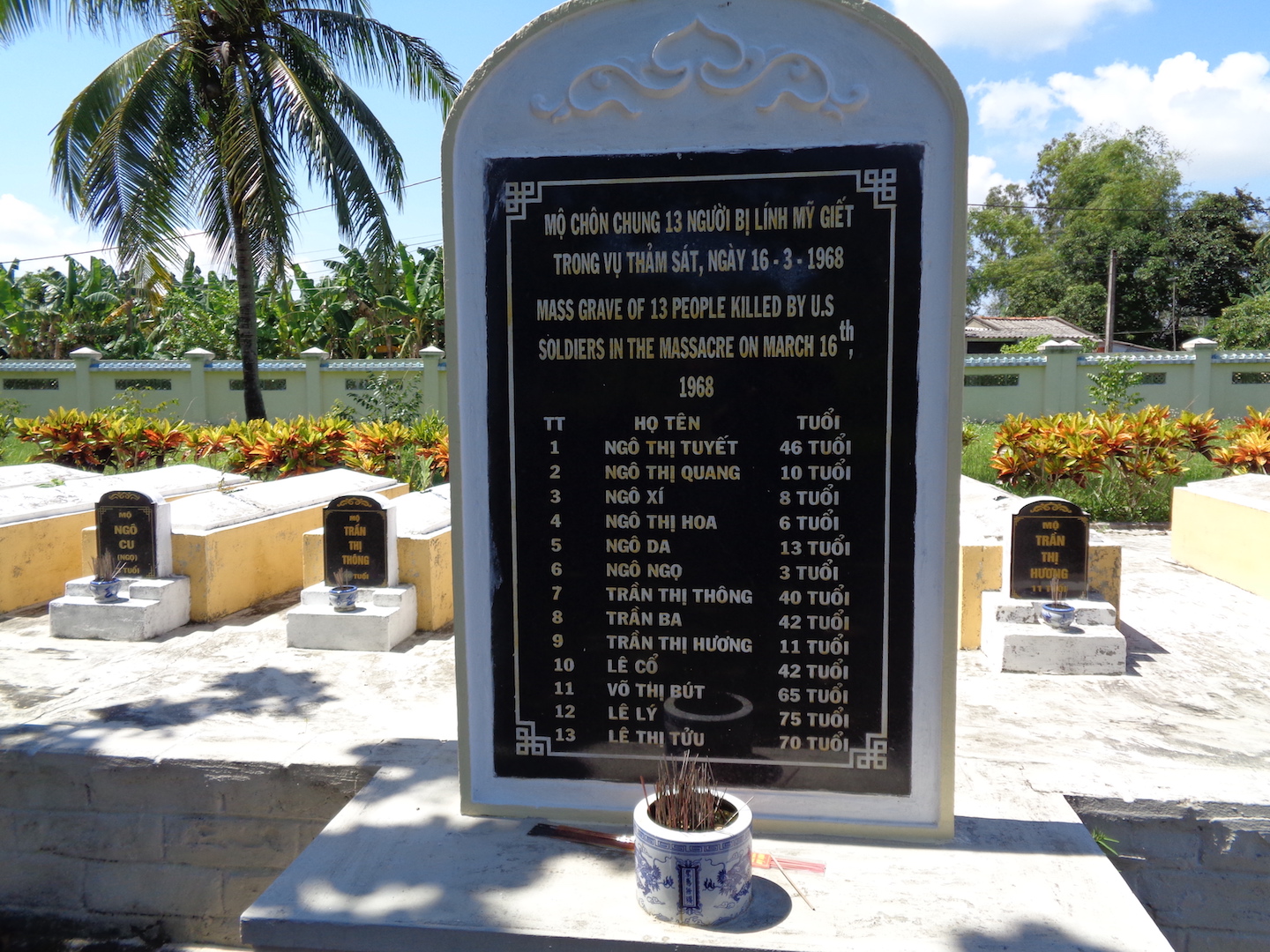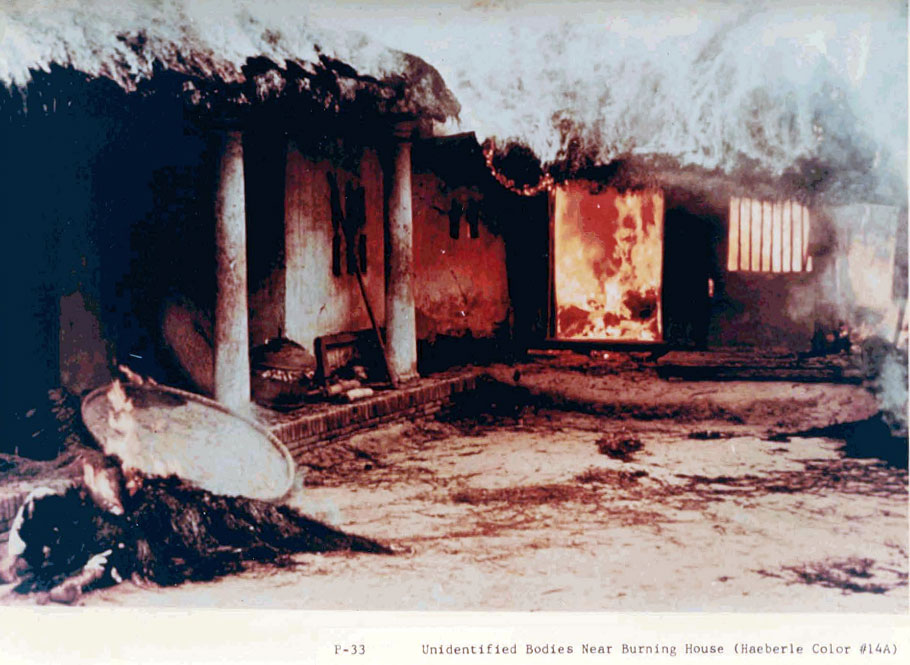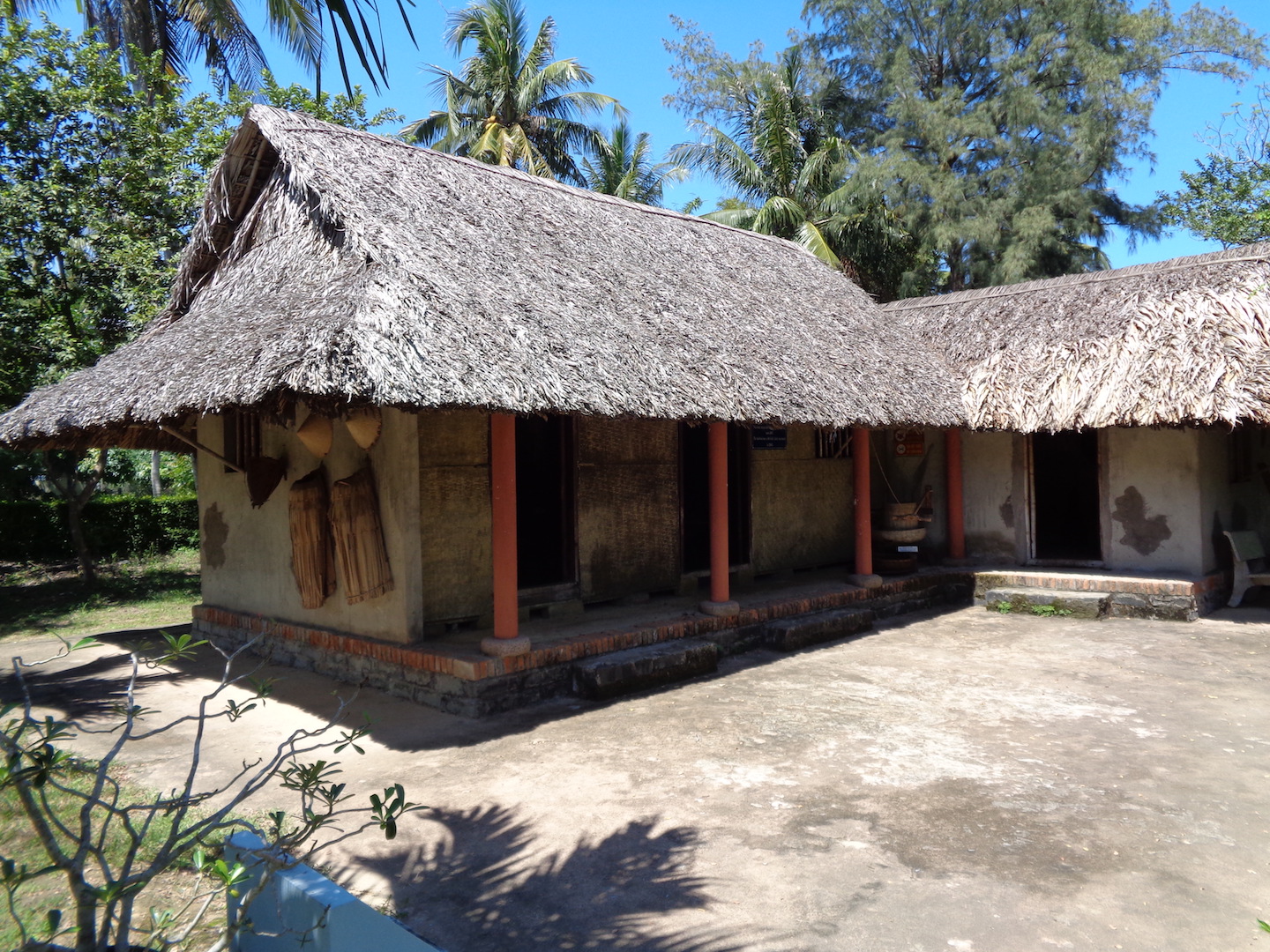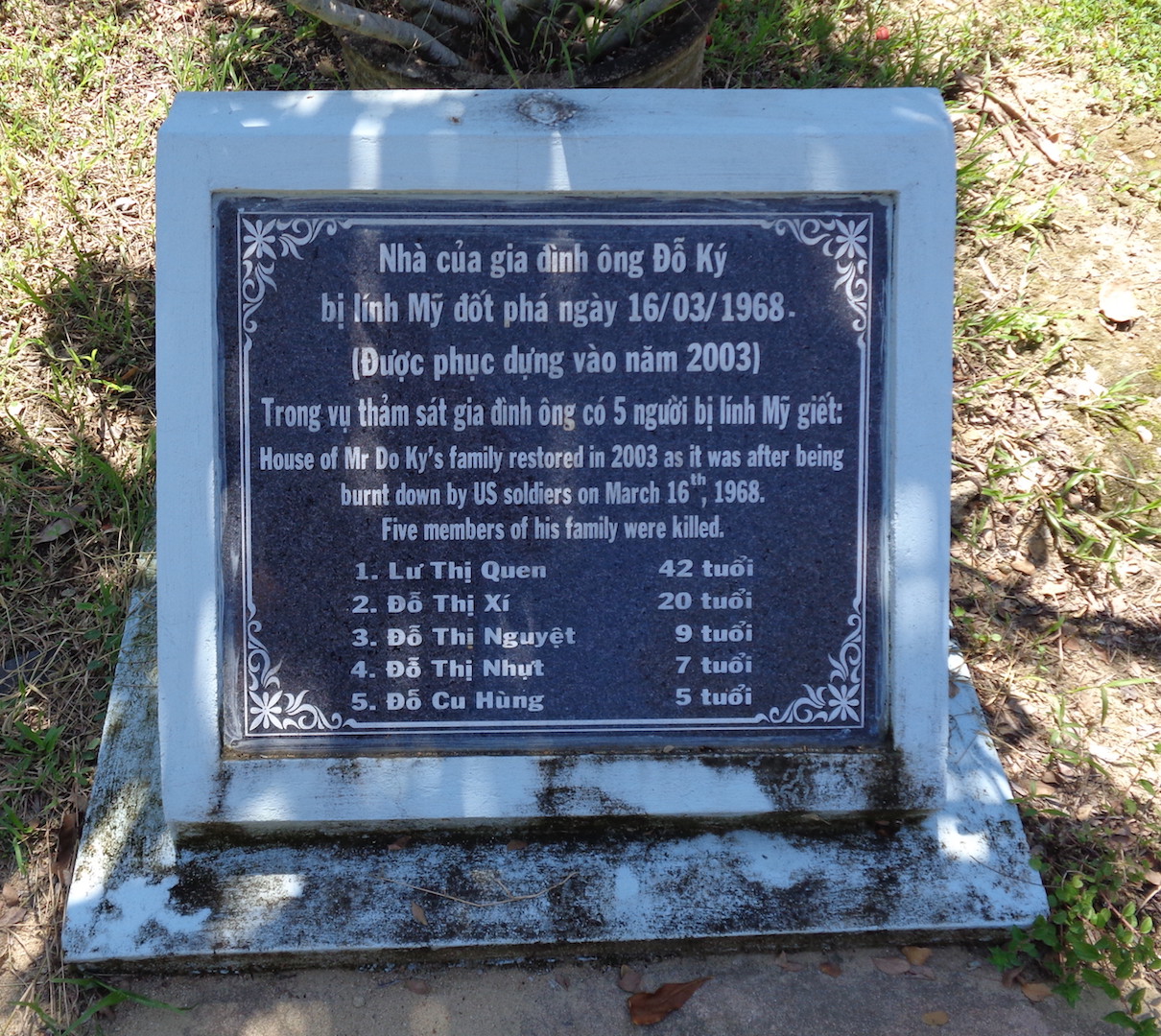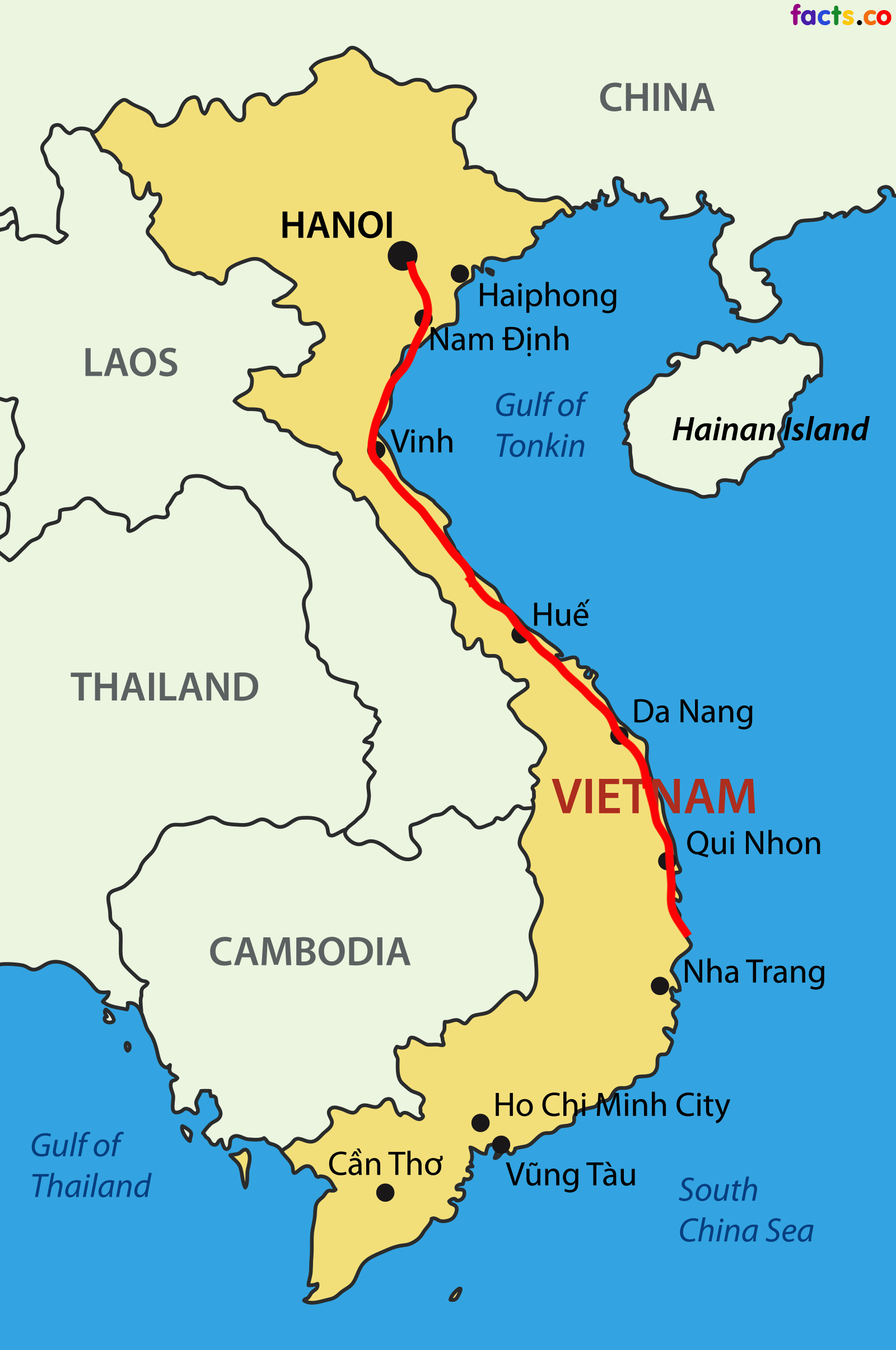Its been another crazy week here in Vietnam. Hot, rainy and humid. How the people lived here without air conditioning is beyond me. I have not camped out once since I’ve been here because I need the a/c at the end of the day. Besides, hotels are so cheap. My average hotel price is $8-$10. That gets me a decent private room with a fan and a/c, private bathroom, flat screen TV (but with only Viet channels), free internet wifi and sometimes a minifrig (and even stocked with water and beer). Anyway, camping would be tough because its wet everywhere and not much privacy. And I need that shower at the end of a long sweaty day.
A warning about this post. I visited the My Lai memorial site (pronounced me lie), where on March 16, 1968 US marines killed over 500 civilians in a brutal slaughter. I remember seeing the images as a nine year old and being mesmerized by them but not fully understanding what happened. I explore this tragedy at the end of the post, and it is not pretty.
But first, some funny stuff. Leaving Danang I passed by the Ho Motel. HAHA.
Sheltering from the rain south of Danang.
A boat going somewhere in Hoi An.
I came across a crew working on these electric junction boxes. Electrical codes? If they exist I bet they aren’t enforced.
I took a wrong turn one day and rode across this rickety bamboo bridge. I hesitated at first and waited until a scooter went across. Then I figured it must be safe.
That wasn’t the only rickety bamboo bridge I rode across. The one was even longer. Some planks were missing so I was a little nervous.
The ubiquitous water buffalo. A common sight in Vietnam.
You see a lot of signs about Ho Chi Minh. He is still revered here as the liberator of Vietnam. The translation is approximately “Promote learning and follow thought, morality and style.”
One of the challenging, fun and frustrating things about traveling is the food. In restaurants outside of tourist areas al the menus are in Vietnamese. I have learned a few words such as ga (chicken), bo (beef), tam (shrimp), and heo (pork). But in one cafe I recognized ga but not any of the other words.
So using google translate I typed in “chan ga sa tac”. The menu showed a picture of a sandwich and google translated the item as “chicken leg clotted.” I was in a bit of a hurry so I did not bother to investigate, I just ordered the dish, expecting some kind of chicken sandwich.
Imagine my surprise then, when the following dish was placed before me.
Yes, it was chicken feet, marinated in a spicy lemon sauce, served cold. Revolted at first, I at least tried to nibble at the skin. There was no meat, just fatty skin. I gave up after a few tries. Live and learn. I should have just ordered the KFC.
More Beaches
This is the low season in Vietnam and many resort areas are empty, which is great because hotels are cheap and restaurants beg for your business. I spent two days at this wonderful beach near Quang Ngai. I had a couple great meals at a restaurant on the beach: a dozen raw oysters and a plate of grilled shrimp and noodles with a beer cost about $7.00. Vietnam is great if you don’t like to spend money.
I rode over a high bridge one day and stopped to admire the view. Just passing below me was a small fishing boat. I managed to get this great bird’s eye photo of the fishermen.
Typical scene of a farmer and cows in a field. Water everywhere.
You’ve got to pay attention when walking down the street in Vietnam. This was about a six foot drop.
Sad baby and grandmother in a small cafe I stopped in one day.
There are plenty of roadside vendors selling coconut water or sugar cane water. Served over ice, this stuff is so refreshing on a hot day. Here’s a typical vendor squeezing the juice out of the cane using a special machine. A glass costs about 25 cents.
This woman also sold deep fried plantains.
I stay in many family run hotels. This was a good one in Qui Nhon. The owner was impressed by my trip and wanted a photo with me.
Tire Troubles
One of the main differences in traveling by bicycle as opposed to a car or bus or train is that you have to be a little bit of a mechanic. When things go well, no problem, but when you start to have mechanical issues you really need to know what you are doing and have the tools and spare parts to deal with breakdowns.
I’ve had amazing luck the past few months. No major breakdowns, just a couple broken spokes in Japan. In fact, I was shocked when I realized that I had only one flat tire the entire time in Japan, which was just over two months. Then I have did not have a flat tire in Vietnam for the first month I was here. That’s unheard of. Well they say everything evens out. This week I had 12 flat tires in three days, and actually had to hitch a ride to a bike shop to get a new tire.
I had bought a new heavy duty tire in Japan and it has worked flawlessly for two months. But one day I got a flat tire. I checked the tire to make sure there was no piece of wire or anything in it then replaced the tube. The next day I have five flats and the day after I had six. There must have been some tiny piece of debris in the tire that was causing the problem. I finally ran out of tubes on the side of the road in a hilly area. Stuck. Then of course it started raining so I had to hide under my rain fly for a bit. I tried calling an uber but I was in a remote area so no uber. As I was walking my bike a guy stopped and somehow I communicated my problem. He said there was a bike shop just up the road. He then called a friend who had a three wheel truck and he came and gave me a ride 5 km to the bike shop (for a fee of course). Amazingly, the small bike shop had a new tire and tube that fit my wheel so he set me up and I was on my way.
But my troubles were not over yet. I had made a reservation in a nice hotel in this small town, but when I got there, no hotel. I searched and searched, asked several people, but no hotel. I was at my wits end. How weird. It was a small town too so I did not see any other hotels. But I stopped and asked some people if there was any lodging around. They said no. But then a kid rides up who must have been deaf mute but somehow he understood I needed a place to sleep. I thought he knew where my hotel was so I followed him. But no, he took me about 10 km away to a small nasty motel. After my flat tire troubles, the hills and rain, and now this, I was more than a little frustrated. Plus the mute kid wanted money too and was not satisfied with what I gave him (about $2.00).
I did not want to stay at the nasty motel but it was too late. The sun was setting and there were no other options. Some days bike touring throws you a curve and you just have to go with it. Actually the motel was not that bad. No windows and dirty, but it had A/C, a bucket for bathing, a fan and a bed. For a few hours sleep what else do you need? Plus there was a decent restaurant nearby.
The My Lai Massacre
WARNING…DISTURBING VIDEO AHEAD
If you are squeamish or do not like terrible war stories you should skip this next part, because I visited the site of the 1968 My Lai massacre, as it has come to be known. The My Lai massacre was one of the most horrific incidents of violence committed against unarmed civilians during the Vietnam War.
In March 1968, Charlie Company—part of the Americal Division’s 11th Infantry Brigade—received word that Viet Cong (VC) guerrillas had taken control of the neighboring village of Son My. Charlie Company was sent to the area on March 16 for a search-and-destroy mission. At the time, morale among U.S. soldiers on the ground was dwindling, especially in the wake of the North Vietnamese-led Tet Offensive, which was launched in January 1968. Charlie Company had lost some 28 of its members to death or injuries, and was down to just over 100 men.
According to intelligence, most of the villagers headed to their local markets at 7 a.m. With the attack scheduled for 8 a.m., solders were told to assume that any persons remaining were, in all likelihood, either VC or VC sympathizers. They were ordered to destroy the village. When they arrived, the soldiers—led by Lieutenant William Calley—found no Viet Cong. Instead, they came across a quiet village of primarily women, children and older men preparing their breakfast rice. Nevertheless, having been psychologically braced for a major fight, the soldiers systematically opened fire on the villagers. Over the next four hours 504 civilians were shot, blown up with hand grenades, burned to death, or drowned in wells. U.S. Army officers covered up the carnage for a year before it was reported in the American press, sparking a firestorm of international outrage. The brutality of the My Lai killings and the official cover-up fueled anti-war sentiment and further divided the United States over the Vietnam War.
How could this happen? These were professional soldiers, trained to fight other soldiers, not slaughter civilians. I think there are several reasons which led to this tragedy.
First, like everyone serving in Vietnam, they had difficulty telling civilians from enemy guerrillas. That was the entire point of Viet Cong guerrilla tactics; to strike rapidly and then disappear without a trace into the civilian population. Women often fought for the Viet Cong, and occasionally older men. C Company had been instructed that everybody still in Son My was Viet Cong. While they would have realized that this was not true when they saw babies and young children, the idea that at least some of the women and older men were Viet Cong would have been believable to them.
Second, they had little respect for Vietnamese human lives. So if they killed a hundred innocent young women and old men to get even three or four Viet Cong, that was all right with them. Furthermore, they believed that any villagers they left alive would feed, house, and care for Viet Cong – and they were probably correct, because the Viet Cong would threaten any villager who refused them help. So the men of C Company expected to gain concrete advantage even by murdering non-VC.
Third, the soldiers expected absolutely no legal consequences to themselves from murdering the civilians, and unfortunately all of them except Lt. Calley were right about that. Even Calley served only three years. Generally people from either side who murdered civilians in that war got away with it.
Fourth, while the above explains why C Company murdered women and old men, it does not explain their most sickening behavior: the murder of babies and children seven years old and younger, the rapes of the women, or the torture. Even to men who were willing to kill hundreds of people to get a few VC and deprive their enemies of support, it was not necessary to murder children or rape and torture adults. This was just the venting of rage, the blind desire to hurt or kill anyone available to get some sense of striking back for their comrades who had died with their legs and arms blown off from mines, their guts spread out on paddy dikes, and the simple daily terror, filth, and misery of their lives. It is the same rage that fuels lynch mobs and witch hunters, and where people can see there is no real risk of consequences for it, they are virtually certain to take out that rage on any helpless scapegoat they can get hold of, guilty or not. The fact that many of these soldiers felt certain they were going to die before going home gave them even less reason to control themselves.
Clearly the massacre was horrible. I ask myself what I would have done in the same situation. I have never had to fight in a war so I can never understand what these young men went through. I would like to think that I would refuse to machine gun children and babies, but I cannot say with 100% certainty that if I was in the same situation and went through the same things those guys went through that I would not have done the same thing. What about you? Would you be capable of killing innocent civilians? How do you know?
In a previous post I mentioned the 2017 Ken Burns documentary The Vietnam War. I just finished this 10 part series and it is amazing. Watch it if you get a chance. I extracted a portion of episode 8 which deals with the My Lai massacre.
The whole question about murder during wartime reminded me of one of my favorite films, Breaker Morant, a 1980 film about three officers charged with murder during the Boer war in South Africa. A true story, the film is mostly about the trial of the officers and the difficulty of prosecuting soldiers for murder during wartime. Below is a clip of the defense attorney’s closing argument where he tries to make the point that in guerrilla war you can’t judge soldiers by civilian standards, as the “normal” customs of war have been thrown out and the normal rules don’t apply. The tragedy of war, he says, is that barbarities are seldom committed by abnormal men. They are committed by normal men in abnormal situations (sound like My Lai?)
There are no winners in war; everyone loses. So why do keep fighting? That’s a question for a future post.
Here are some photos of the My Lai memorial.
A sculpture of a defiant mother carrying her dead child.
Soldiers forced 170 villagers into this ditch then shot them all with machine guns.
Graves of some victims.
Photo taken by US Army photographer showing dead villager and house burning.
They rebuilt the house so you can see how the people lived. I still don’t know how they survived with air conditioning or even fans.
Well that’s enough for now. It’s been a difficult post with all the war stuff. I won’t have too much more to say about the war from now on unless I get goaded. From here to Ho Chi Minh City it’s more beaches and hammocks. Here’s my current position just north of Nha Trang.
